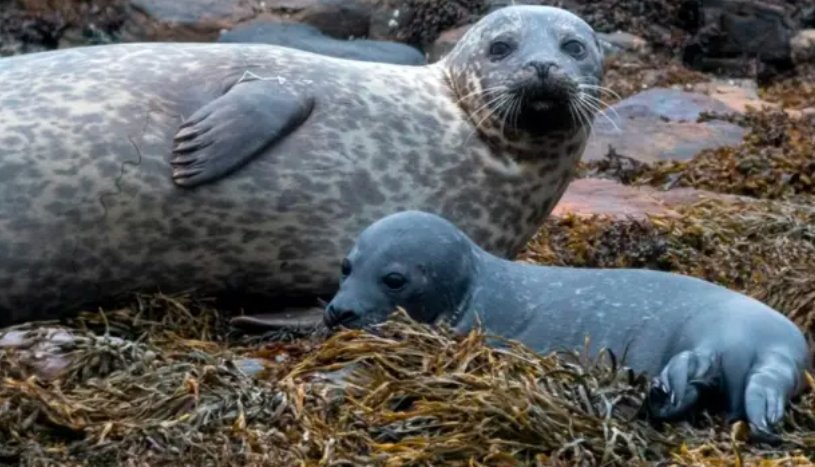Scotland’s west coast, long considered the final stronghold for harbour seals in the UK, is no longer a safe haven. A major new study by the University of St Andrews has found a 20% decline in seal numbers between 2018 and 2023, marking the first significant downturn in decades for the area.
Once a refuge, now a red flag
The research, led by the Sea Mammal Research Unit (SMRU), paints a sobering picture of the marine mammal’s fate. Using aerial surveys, tagging, and long-term photo identification methods, scientists have tracked the species since the 1980s. Until recently, the Inner Hebrides and western Highlands had resisted the sharp declines seen in other parts of the UK.
“This is a real wake-up call,” said Dr Debbie Russell, lead seal ecologist and SMRU’s deputy director. “For years, we’ve viewed the west coast as a refuge for harbour seals, a place where they seemed to be doing okay. To now see declines in this region suggests that the pressures affecting these animals are becoming more widespread or severe.”

Scotland’s stronghold is weakening
Harbour seals have been in long-term decline across much of the UK since the early 2000s. However, Scotland’s west coast held about 65% of the UK’s remaining population, effectively making it the last major sanctuary for the species.
That sanctuary is now showing cracks. Between 2018 and 2023, researchers recorded a sharp drop in numbers across major west coast haul-out sites, raising fears of a broader ecological shift affecting the entire North Atlantic population.
What’s driving the decline?
While the precise cause of the population dip remains uncertain, experts are investigating several overlapping threats:
-
Infectious disease: Viral outbreaks, such as Phocine Distemper Virus (PDV), have previously decimated seal colonies in continental Europe and could be spreading.
-
Climate change: Warmer sea temperatures may be impacting fish stocks, shifting prey distributions or increasing stress-related vulnerabilities.
-
Competition with grey seals: Larger, more dominant grey seals — also native to Scotland — may be pushing harbour seals from prime habitats.
-
Human disturbance: Increasing public access to beaches and marine tourism may be forcing the shy harbour seals away from safer haul-out spots.
-
Marine noise and pollution: Underwater noise from shipping and development, along with chemical contaminants, may be disrupting feeding and reproduction.
Seal wars on the shoreline?
One increasingly discussed theory suggests inter-species competition may be accelerating the decline. Grey seals, which are bigger and more aggressive, might be muscling out harbour seals from traditional territory.
In some cases, this appears to be pushing the smaller seals onto more exposed, human-accessible beaches, where they’re vulnerable to disturbance, dogs, and marine litter.
Conservation community calls for immediate action
Dr Carol Sparling, SMRU’s director, called for a coordinated and rapid conservation response.
“We can’t afford to wait,” she said. “We need to understand what’s driving these changes and implement targeted conservation measures before it’s too late.”
Possible interventions being considered include:
-
Protected marine zones with restricted human access during breeding seasons
-
Monitoring of disease outbreaks using tagging and sampling
-
Fisheries management to ensure sustainable prey stocks
-
Public education campaigns to reduce shoreline disturbance
What’s next?
The findings have already prompted discussions between conservationists, Scottish Government officials, and marine biologists. Further analysis of tagging data, stranding records, and prey surveys is underway to piece together the factors behind the collapse.
But the broader concern is clear: If harbour seals can’t thrive on Scotland’s west coast — once thought to be their last refuge — then the species may be closer to national endangerment than previously feared.


















